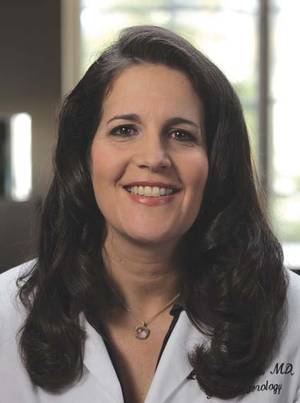Videocapsule endoscopy’s success at identifying the cause of obscure gastrointestinal bleeding was found to be associated with markedly different clinical factors in two separate studies published in the December issue of Clinical Gastroenterology and Hepatology.
Capsule endoscopy allows visualization of the entire small bowel. Knowing which factors are associated with positive findings on capsule endoscopy would allow more appropriate patient selection for the procedure. This in turn would improve its diagnostic yield and maximize resource utilization.
Unfortunately, no single factor was found to accurately predict the success of this form of endoscopy in patients who presented with obscure gastrointestinal bleeding (OGIB) and who had negative or ambiguous findings on upper and lower endoscopies. In fact, the two studies identified entirely different predictors.
In the first study, Dr. Neal C. Shahidi and his associates at the University of British Columbia, Vancouver, reviewed the records of all 698 capsule endoscopies performed at St. Paul’s Hospital in 2001-2011 for the indication of OGIB. Mean patient age was 63 years, and the cohort was equally composed of men and women.
Approximately 48% of these study subjects presented with overt bleeding: hematemesis, hematochezia, or melena. The other 52% presented with occult bleeding evidenced by a positive fecal occult blood test (28%), iron deficiency anemia (21%), or an acute drop in hemoglobin (3%). No causes for the bleeding were identified on conventional esophagogastroduodenoscopy, intraoperative enteroscopy, or colonoscopy.
In approximately 4% of cases, capsule endoscopy failed for technical reasons, including limited visualization because of excessive debris, failure of the videocapsule to enter the small bowel within the procedure time, or inadequate viewing of the small bowel.
Capsule endoscopy definitively identified the cause of the bleeding – ulcerations/erosions, masses, vascular lesions, or visible blood – in 42% of these cases. Most were localized to the small bowel, although 18% were found in the stomach or cecum.
Even though the investigators "rigorously assessed" symptoms, other clinical factors, and patient characteristics such as smoking status, alcohol consumption, and a variety of comorbid conditions, the only factors found to be significantly associated with positive findings on capsule endoscopy were a high number of esophagogastroduodenoscopies leading up to the procedure (odds ratio 1.17), an increase in the need for transfusions (3-9 transfusions, OR 1.70; 10 or more, OR 2.72), and the presence of comorbid connective-tissue disease (OR 2.24).
This is the first report in the literature linking connective-tissue disease with positive findings on capsule endoscopy. There were 41 patients with rheumatoid arthritis, polymyalgia rheumatica, scleroderma, or other connective-tissue disorders in this series.
The increased frequency of positive capsule endoscopy in this subgroup of patients may be due in part to their predisposition to vascular lesions. Alternatively, connective-tissue disease may simply be a marker for the regular use of NSAIDs, Dr. Shahidi and his associates said.
Regarding the association with an increasing need for transfusions, "it is acceptable to presume that a patient’s transfusion requirements may be a marker for ongoing or severe pathology within the gastrointestinal tract," they noted.
Similarly, more frequent esophagogastroduodenoscopies may be another marker for ongoing GI bleeding, "as patients who continue to experience significant bleeding may undergo more endoscopic assessment," they added.
In the second study, Dr. Lucie Lepileur of the University of Rouen (France) and her colleagues reviewed the records on 911 capsule endoscopies performed for OGIB at two university referral centers during 2004-2010.
All the study subjects had undergone upper and lower endoscopies that were deemed negative or insufficient to explain their symptoms. A total of 41% presented with overt bleeding, chiefly melena and hematochezia, and the remaining 59% had occult bleeding.
Capsule endoscopy failed for technical reasons in approximately 1% of the cohort. It permitted a definitive diagnosis in 56%, including 203 angioectasias, 88 ulcerations, 70 tumors, 24 varices, and 6 diverticula of the small bowel. The procedure also identified lesions in the esophagus or stomach and the colon.
In another 8% of patients, capsule endoscopy revealed signs of suspected recent bleeding such as residual blood, clots, or red spots, but didn’t identify a specific lesion. The procedure failed to reveal any possible source of bleeding in the remaining 35% of cases.
The only factors found to be significantly associated with positive findings on capsule endoscopy were a history of overt bleeding (OR 3.8), male gender (OR 1.4), age of more than 60 years (OR 1.4), and inpatient status (OR 1.3). Conversely, female gender was the only factor found to be predictive of a nondiagnostic procedure.
The link with advanced age "can easily be explained by the more frequent occurrence of angioectasia in the elderly, which was the main bleeding lesion found in our series," Dr. Lepileur and her colleagues wrote.


